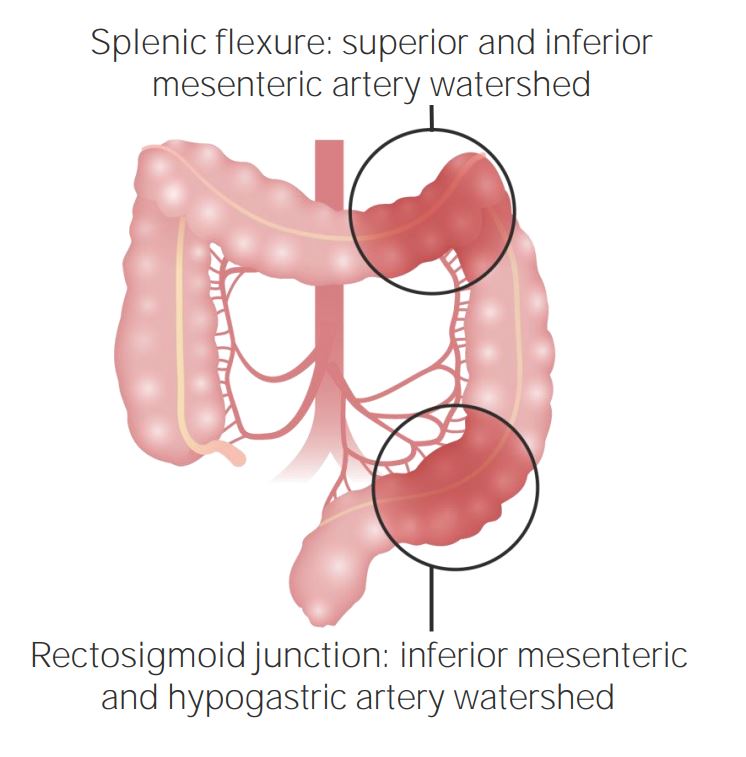Playlist
Show Playlist
Hide Playlist
ATP Depletion – Mechanisms of Cellular Injury
-
Slides Cellular Pathology Mechanisms of Injury.pdf.pdf
-
Reference List Pathology.pdf
-
Download Lecture Overview
00:01 Let's talk first about ATP depletion. 00:04 And it is a combination, as we reduce ATP of reduced oxidative phosphor relations. 00:10 So we're not generating the ATP and the cell, knowing that it needs to maintain some level of ATP generation going to anaerobic glycolysis. 00:20 So if we cut off the oxygen supply, we switch to anaerobic metabolism and that has its on its own consequences. 00:29 So oxygen completion, what happens here? You're looking at a heart and we're looking at a blocked blood vessel. 00:37 In a subsequent topic, we will discuss atherosclerosis and all of us in detail. 00:42 But for right now, let's just say that we have an occlusion of a vessel and all of the heart downstream of that occlusion is now depleted of oxygen. 00:52 What happens? Well, that diminished oxygen will mean that we're getting diminished ATP right off the bat. 00:58 We have nothing to accept electrons down the electron transport chain, so we will generate no ATP via oxidative phosphorylation. 01:07 So we will not have enough ATP for our sodium-potassium-ATPase and as a result of that, we will have increased amounts of sodium getting into the cell, and when that sodium is in the cell, it brings with it water, and we're gonna have cellular swelling. 01:28 We will also not be able to keep calcium out at appropriate levels. 01:32 And so we'll see increased intracellular calcium and we're going to see is a result of these ions moving in with their obligate water, increased intracellular and intraorganellar edema. 01:44 So things we're just gonna get swollen, swollen, swollen, until they 1. don't function and 2. rupture. 01:51 We are going to try, however, to maintain some ATP. 01:55 And cells have this anaerobic mechanism when they don't have oxygen to generate ATP at very low levels. 02:02 So oxidative phosphorylation per each glucose will generate 36 to 38 ATPs, depending on how you keep score. 02:09 When you do it by anaerobic mechanisms, you get 2 free ATP. 02:15 So it's more than an order of magnitude difference in terms of how much ATP you can get from breaking down sugars, etc. in the absence of oxygen. 02:24 So nevertheless, the cell is frantically trying to generate ATP, so it will have increased glycolysis. 02:30 It will break down all of the glycogen and sugars that it has at its disposal, which will reduce the amount of glycogen that's present. 02:37 In doing so though, we don't get the final movement of the metabolic pathway into the TCA cycle and complete breakdown. 02:48 So we accumulate lactic acid. 02:51 Lactic acid will reduce the pH. 02:54 So now we're getting an acidotic environment. 02:57 When that happens, pH is very important in maintaining normal chromatin architecture, and we will get disruption of that. 03:03 At the same time, we are breaking down whatever ATP we have and we're not synthesizing new ATP at a high enough level. 03:11 So we're accumulating inorganic phosphate. 03:14 So we're increasing the intracellular ionic environment big time from all those ions sodium and calcium and everything else. 03:22 We have increased lactic acid, which is reducing the pH, and we have high levels of inorganic phosphates. 03:29 This is going to make the cells swell even more. 03:32 That's what that picture is representing above that. 03:35 And then as we're changing the pH, as we're changing the ionic environment, as we are making things more edematons, we are going to get ribosome detachment. 03:45 Oh darn! Now that means we're not maintaining normal protein synthesis. 03:50 That all goes away. 03:52 And if we don't have adequate proteins, then we don't make membranes appropriately. 03:59 And we get accumulation of excess phospholipid which curls up into balls that we can see as kind of multilamellar bodies. 04:07 And that's what's being demonstrated on the electron micrograph that you see on the right hand side. 04:12 So we have clearly started losing most of the cellular function, just a result of having low oxygen levels.
About the Lecture
The lecture ATP Depletion – Mechanisms of Cellular Injury by Richard Mitchell, MD, PhD is from the course Cellular Injury.
Included Quiz Questions
Which of the following will result from reduced activity of Na⁺/K⁺-ATPase?
- Increased intracellular Na⁺ concentration
- Increased intracellular K⁺ concentration
- Increased extracellular Ca⁺⁺ concentration
- Movement of water to the extracellular compartment
- Shrinkage of the intracellular organelles
Which of the following will result from the deactivation of oxidative phosphorylation?
- Accumulation of lactic acid
- Increased glycogen synthesis
- Increased protein synthesis
- Decreased inorganic phosphate concentration
- Decreased intracellular H⁺ concentration
Customer reviews
5,0 of 5 stars
| 5 Stars |
|
1 |
| 4 Stars |
|
0 |
| 3 Stars |
|
0 |
| 2 Stars |
|
0 |
| 1 Star |
|
0 |
1 customer review without text
1 user review without text





